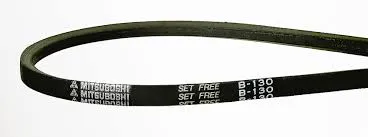- Arabic
- French
- Russian
- Spanish
- Portuguese
- Turkish
- Armenian
- English
- Albanian
- Amharic
- Azerbaijani
- Basque
- Belarusian
- Bengali
- Bosnian
- Bulgarian
- Catalan
- Cebuano
- Corsican
- Croatian
- Czech
- Danish
- Dutch
- Afrikaans
- Esperanto
- Estonian
- Finnish
- Frisian
- Galician
- Georgian
- German
- Greek
- Gujarati
- Haitian Creole
- hausa
- hawaiian
- Hebrew
- Hindi
- Miao
- Hungarian
- Icelandic
- igbo
- Indonesian
- irish
- Italian
- Japanese
- Javanese
- Kannada
- kazakh
- Khmer
- Rwandese
- Korean
- Kurdish
- Kyrgyz
- Lao
- Latin
- Latvian
- Lithuanian
- Luxembourgish
- Macedonian
- Malgashi
- Malay
- Malayalam
- Maltese
- Maori
- Marathi
- Mongolian
- Myanmar
- Nepali
- Norwegian
- Norwegian
- Occitan
- Pashto
- Persian
- Polish
- Punjabi
- Romanian
- Samoan
- Scottish Gaelic
- Serbian
- Sesotho
- Shona
- Sindhi
- Sinhala
- Slovak
- Slovenian
- Somali
- Sundanese
- Swahili
- Swedish
- Tagalog
- Tajik
- Tamil
- Tatar
- Telugu
- Thai
- Turkmen
- Ukrainian
- Urdu
- Uighur
- Uzbek
- Vietnamese
- Welsh
- Bantu
- Yiddish
- Yoruba
- Zulu
سپتامبر . 01, 2024 21:27 Back to list
Auto Timing Belt Replacement and Maintenance | Quality Parts & Services
Understanding the Importance of Auto Timing Belts
When it comes to the intricate machinery of automobiles, few components are as crucial yet often overlooked as the timing belt. This essential part of an internal combustion engine plays a vital role in synchronizing the crankshaft and camshaft, ensuring that your engine runs smoothly and efficiently. Understanding the auto timing belt is key for both car owners and enthusiasts alike.
What is a Timing Belt?
The timing belt is a rubber belt with teeth that connects the crankshaft to the camshaft in your engine. Its primary function is to keep the engine's valves and pistons operating in sync. This synchronization is essential because if the timing is off, valves could collide with pistons, resulting in catastrophic engine damage. Typically made from reinforced rubber, timing belts can also incorporate materials like fiberglass to enhance durability.
Why is Timing Belt Maintenance Important?
Like any other part of your car, the timing belt is subject to wear and tear. Over time, it can crack, fray, or even break. Regular maintenance is critical because a failed timing belt can lead to severe engine complications, including bent valves, damaged pistons, and a costly repair bill. Most manufacturers recommend replacing the timing belt every 60,000 to 100,000 miles, but it's wise to consult your vehicle's owner manual for specific guidance.
Signs of Timing Belt Issues
auto timing belt

Being proactive about timing belt maintenance can save you from unexpected breakdowns. Pay attention to early warning signs such as a ticking noise from the engine, engine misfires, or noticeable oil leaks. If you notice any of these symptoms, it’s crucial to have your vehicle inspected by a qualified technician as soon as possible.
The Replacement Process
Replacing a timing belt is not a simple task and involves a fair amount of labor. It usually requires removing several engine components to access the belt. Because of its complexity, it's advisable to have a professional mechanic perform the replacement. During this process, it’s also a good idea to replace the water pump, since it is often located near the timing belt and is subject to similar wear.
Prevention is Key
To extend the life of your timing belt, several preventive measures can be taken. Regularly scheduled maintenance, including oil changes and inspections, will help keep your engine healthy and reduce the strain on your timing belt. Additionally, avoiding harsh driving conditions and aggressive acceleration can mitigate wear.
Conclusion
In summary, the auto timing belt is a small but mighty component that plays a significant role in your vehicle's performance. By understanding its function, recognizing the signs of wear, and adhering to maintenance schedules, you can prevent potential failures and extend the life of your engine. Remember, the old saying “an ounce of prevention is worth a pound of cure” certainly rings true when it comes to timing belts. Taking care of this vital component will not only enhance your vehicle's performance but also provide peace of mind during your travels. So, the next time you get an oil change, don’t forget to inquire about your timing belt. It's an easy step that might just save you from a future headache.
-
Korean Auto Parts Timing Belt 24312-37500 For Hyundai/Kia
NewsMar.07,2025
-
7PK2300 90916-T2024 RIBBED BELT POLY V BELT PK BELT
NewsMar.07,2025
-
Chinese Auto Belt Factory 310-2M-22 For BMW/Mercedes-Benz
NewsMar.07,2025
-
Chinese Auto Belt Factory 310-2M-22 For BMW/Mercedes-Benz
NewsMar.07,2025
-
90916-02660 PK Belt 6PK1680 For Toyota
NewsMar.07,2025
-
drive belt serpentine belt
NewsMar.07,2025

